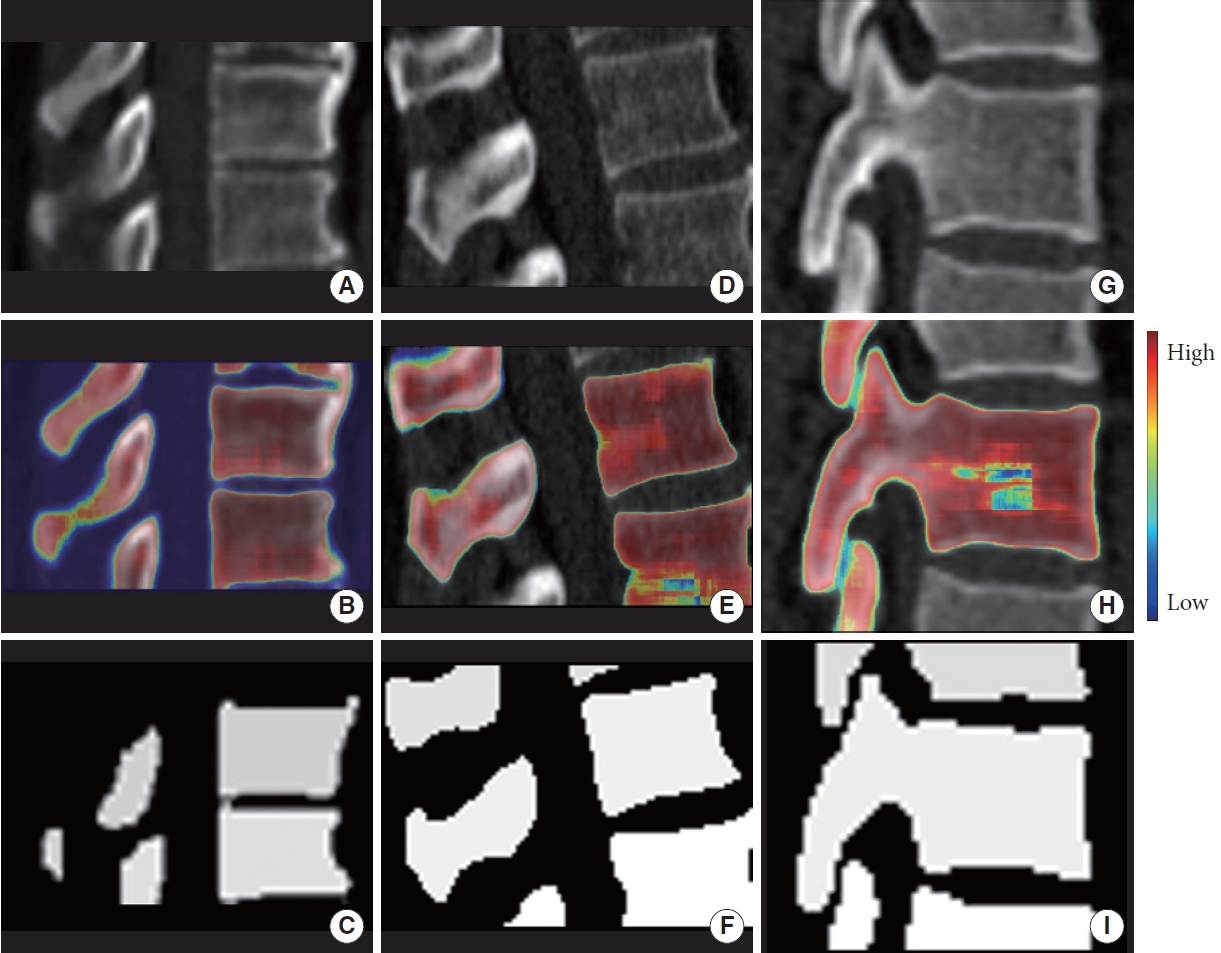1. McCloskey K, Turlip R, Ahmad HS, et al. Virtual and augmented reality in spine surgery: a systematic review. World Neurosurg 2023;173:96-107.


3. Ghaednia H, Fourman MS, Lans A, et al. Augmented and virtual reality in spine surgery, current applications and future potentials. Spine J 2021;21:1617-25.


4. Alzahrani Y, Boufama B. Biomedical image segmentation: a survey. SN Comput Sci 2021;2:310.


5. Mharib AM, Ramli AR, Mashohor S, et al. Survey on liver CT image segmentation methods. Artif Intell Rev 2012;37:83-95.


6. Varkarakis V, Bazrafkan S, Corcoran P. Deep neural network and data augmentation methodology for off-axis iris segmentation in wearable headsets. Neural Netw 2020;121:101-21.


7. Han Z, Wei B, Mercado A, et al. Spine-GAN: semantic segmentation of multiple spinal structures. Med Image Anal 2018;50:23-35.


8. Molina CA, Phillips FM, Colman MW, et al. A cadaveric precision and accuracy analysis of augmented reality-mediated percutaneous pedicle implant insertion. J Neurosurg Spine 2020;34:316-24.


10. King BF. Artificial intelligence and radiology: what will the future hold? J Am Coll Radiol 2018;15(3 Pt B):501-3.


11. Ronneberger O, Fischer P, Brox T. U-Net: convolutional networks for biomedical image segmentation. arXiv 150504597. [Preprint]. 2015 [cited 2021 Nov 3]. Available from:
http://arxiv.org/abs/1505.04597.

13. Siddique N, Paheding S, Elkin CP, et al. U-Net and its variants for medical image segmentation: a review of theory and applications. IEEE Access 2021;9:82031-57.

14. Azad R, Aghdam EK, Rauland A, et al. Medical image segmentation review: the success of U-Net. arXiv 2211.14830v1. [Preprint]. 2022 [cited 2023 Oct 16]. Available from:
https://arxiv.org/abs/2211.14830.
16. Terven J, Cordova-Esparza D. A comprehensive review of YOLO: from YOLOv1 and beyond. arXiv 2304.00501v7. [Preprint]. 2023 [cited 2023 Oct 16]. Available from:
http://arxiv.org/abs/2304.00501.
18. Sekuboyina A, Husseini ME, Bayat A, et al. VerSe: a vertebrae labelling and segmentation benchmark for multi-detector CT images. Med Image Anal 2021;73:102166.


19. Payer C, Štern D, Bischof H, et al. Coarse to fine vertebrae localization and segmentation with SpatialConfigurationNet and U-Net. Proceedings of the 15th International Joint Conference on Computer Vision, Imaging and Computer Graphics Theory and Applications; 2020 Feb 27-29. Valletta, Molta. SCITEPRESS - Science and Technology Publications; 2020:124-33. Available from:
http://www.scitepress.org/DigitalLibrary/Link.aspx?doi=10.5220/0008975201240133.
20. Liebl H, Schinz D, Sekuboyina A, et al. A computed tomography vertebral segmentation dataset with anatomical variations and multi-vendor scanner data. arXiv 2103.06360v1. [Preprint]. 2021 [cited 2023 Oct 24]. Available from:
http://arxiv.org/abs/2103.06360.


26. Antonelli M, Reinke A, Bakas S, et al. The medical segmentation decathlon. Nat Commun 2022;13:4128.


27. Simpson AL, Antonelli M, Bakas S, et al. A large annotated medical image dataset for the development and evaluation of segmentation algorithms. arXiv 1902.09063v1. [Preprint]. 2019 [cited 2023 Oct 10]. Available from:
https://arxiv.org/abs/1902.09063.
28. Deng Y, Wang C, Hui Y, et al. CTSpine1K: a large-scale dataset for spinal vertebrae segmentation in computed tomography. arXiv 2105.14711v3. [Preprint]. 2021 [cited 2023 Oct 10]. Available from:
https://arxiv.org/abs/2105.14711.
29. Jocher G, Changyu L, Hogan A, et al. ultralytics/yolov5: initial release [Internet]. Geneva (Switzerland): CERN; 2020 [cited 2023 Oct 10]. Available from:
https://zenodo.org/record/3908560.
30. Redmon J, Divvala S, Girshick R, et al. You Only Look Once: unified, real-time object detection. arXiv 1506.02640v5. [Preprint]. 2015 [cited 2023 Oct 25]. Available from:
https://arxiv.org/abs/1506.02640.

31. Sarda A, Dixit S, Bhan A. Object detection for autonomous driving using YOLO algorithm [Internet]. 2021 2nd International Conference on Intelligent Engineering and Management (ICIEM). London, United Kingdom: IEEE; 2021 [cited 2023 Dec 8]:447–51. Available from:
https://ieeexplore.ieee.org/document/9445365/.
32. Van Rossum G, Drake FL Jr. Python reference manual. Centrum voor Wiskunde en Informatica Amsterdam; 1995.
35. Brett M, Markiewicz CJ, Hanke M, et al. nipy/nibabel: 5.1.0 [Internet]. Geneva (Switzerland): CERN; 2023 [cited 2023 Nov 29]. Available from:
https://zenodo.org/record/7795644.
36. Reis D, Kupec J, Hong J, et al. Real-time flying object detection with YOLOv8. arXiv 2305.09972v1. [Preprint]. 2023 [cited 2023 Oct 24]. Available from:
https://arxiv.org/abs/2305.09972.
37. Zong Z, Song G, Liu Y, et al. DETRs with collaborative hybrid assignments training. arXiv 2211.12860v6. [Preprint]. 2022 [cited 2023 Oct 27]. Available from:
https://arxiv.org/abs/2211.12860.

39. Dice LR. Measures of the amount of ecologic association between species. Ecology 1945;26:297-302.


40. Jaccard P. The distribution of the flora in the alpine zone.1. New Phytol 1912;11:37-50.

41. Ralescu A. Probability and fuzziness. Inf Sci 1984;34:85-92.

42. Minaee S, Boykov YY, Porikli F, et al. Image segmentation using deep learning: a survey. IEEE Trans Pattern Anal Mach Intell 2022;44:3523-42.


43. Csurka G, Volpi R, Chidlovskii B, et al. Semantic image segmentation: two decades of research. arXiv 2302.06378v1. [Preprint]. 2023 [cited 2023 Oct 27]. Available from:
https://arxiv.org/abs/2302.06378.

44. Cardenas CE, Yang J, Anderson BM, et al. Advances in autosegmentation. Semin Radiat Oncol 2019;29:185-97.


51. He K, Zhang X, Ren S, et al. Spatial pyramid pooling in deep convolutional networks for visual recognition. arXiv 1406.4729v4. [Preprint]. 2014 [cited 2023 Nov 30]. Available from: https://arxiv.org/abs/1406.4729.



































